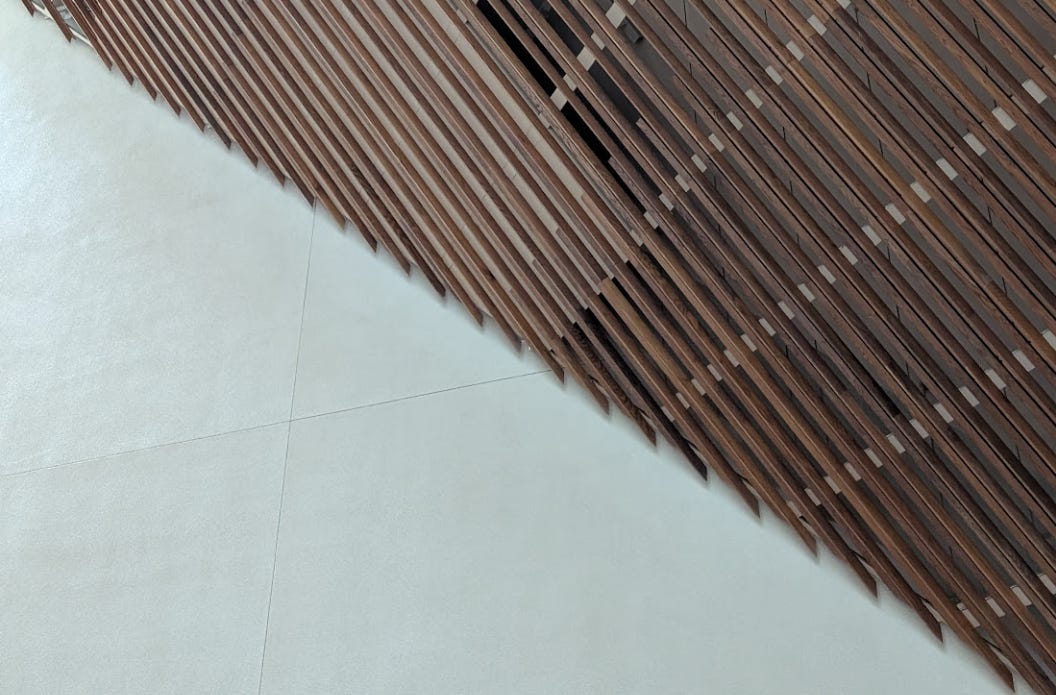Slice nerd (wk 20/25)
Pizza nerd; talking (or not-talking) about not-knowing; partial light transmission (and photos of same).
Hello friends,
I left the East Coast on a chilly and rainy spring day, and got back to a hot and humid (but fortunately not absurdly humid) Singapore. The word “torpor” is applicable to my current situation.
Writing
New York has a lot of pizza. There are the enormous slices of foldable pizza at the likes of Coronet (enjoyable but ultimately trashy), and the obsessive attempts at Neapolitan pizza (eat within seconds or watch it turn to soup), and the fried pizzas, and the Greek pizzas, and the Chicago-style deep dish pizzas, and and and. I forwent all these however, for a New American pizza. This loosely defined school of pizza doesn’t rely only on traditional strong flours or Italian 00, and has a more robust crust which is baked for longer. The New American pizzas I’ve liked most blend flours from older wheat varieties into the dough, and pay close attention to where the ingredients on top come from. Like everything else, pizza can be regarded as having nearly infinite detail — I have been here for this #content for several years now.
👉 An idiosyncratic view of Greatness in pizza.
👉 Strategic tradeoffs in making a Great pizza.
So far this year, I’ve worked with teams in government ministries, multilateral organisations, big traditional companies, and one startup. Each had different strategy discontentments but there was one common thread. The teams all had a growing awareness of the importance of embracing uncertainty and not treating all unknowns as risk — but none of them had a nuanced language for talking within the rest of their organisations about strategic unknowns that aren’t risky. And so everything from procurement systems to team incentives is designed wrong and gets in the way of doing effective work. Not only do we need a good way to distinguish uncertainty from risk, we also need better ways to distinguish and talk about different types of uncertainty. I call these different not-knowings, and this week I wrote about why it’s valuable to separate them conceptually.
👉 What we keep getting wrong about not-knowing.
Elsewhere
I watched all of Dune: Prophecy on a very long flight. Lavish visuals everywhere, but what I noticed was the recurrent motif of partial light transmission used both architecturally and for costume: Fine meshes and ornamented netting of many types, filigree metalwork, lace and eyelet cloths, pierced-work and latticework screens. This partial transmission is more chiaroscuro than translucence, and is structurally appropriate for a year-round bright sun climate — it’d be nice to have more of this kind of thing in Singapore.
See you next week,
VT









